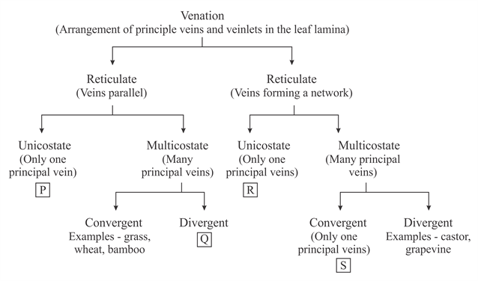Most of the dicot leaves show parallel venation.
Important Questions on Morphology of Flowering Plants
Reticulate venation and parallel venation.
Differentiate with a diagrammatic representation of reticulate and parallel venation.
Fill in the blank and choose the correct option.
(i) __A__ provides rigidity to the leaf blade.
(ii) The leaf is attached to the stem by the __B__ and may bear leaf two lateral leaf-like structures called ___C__.
Name the following:
Plants with parallel venation
Represent the union of two sets by Venn diagram for each of the following.
is a prime number between and
is an odd number between and
Read the following statements and select the correct option:
A. Veins provide rigidity to the leaf blade and act as the channel of transport for water, minerals, and food materials.
B. Leaves of most of the dicotyledonous plants bear veins that run parallel to each other within a lamina.

Students were on the excursion to a botanical garden. They noted the observation given below. Will you be able to help them in understanding those conditions?
Students observed large leaves of coconut and small leaves of Mimosa. Teacher asked it what way they are similar?
Simple leaf and compound leaf.
Pinnately compound leaf is found in

